
Setup & config options
Suitable power supply
RasPi & sFTP file transfer
Home network print server
Home network scan server
Mesh : home Lan USB drive
Explore hard & software
UFW firewall explained
Secured by fail2ban server
Software packaging & PPA
Apache 2.4+ LAMP server
https web server : port 443
Varnish caching proxy
Module : cgi & perl
Module : geoip
Modules : php & mysql
http*s error handling
Server : conditional logging
TL-domain & dynamic DNS
Webalizer log analyser
Defeat referrer spam
robots.txt & xml sitemaps
Server : .htaccess handling
The game & not the islands
Setup & config options
North Atlantic : Macaronésia
🚫 No ads & tracking
Portugal
A short snapshot on Portugal's mainland
This is an older article which I wrote on a free subdomain provided by Wordpress many years ago.
13-Dec 2018
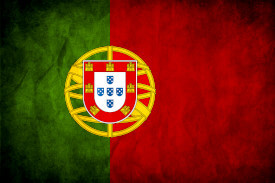
Portugal mainland - a quick overview
Centuries ago, Portugal was a pioneer of worldwide exploration. Until recently, however, it was never as successful in attracting visitors to its own shores. Outside of greater Lisbon, the Algarve, and the island of Madeira, Portugal remained unknown and undiscovered by the mainstream visitor for many decades.
Today’s travellers are beginning to realize that Portugal was unjustly overlooked. It offers sandy beaches, art treasures, flavorful cuisine, a unique form of architecture, charming handcrafts, a mild climate, moderate hotel rates, and polite and friendly people.
Only two million annual visitors came to Portugal in the late 1970s. The number swelled to 20 million in the mid-1990s, and an explosion of hotel and resort building has kept pace. Portugal today attracts some 22 million visitors, perhaps more.
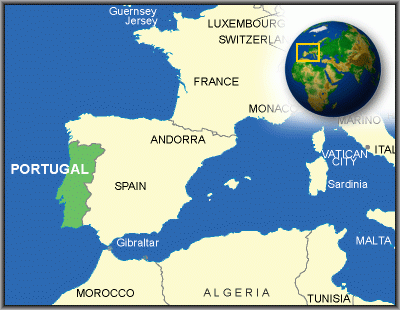
Despite its small size 225 km wide and 612 km long, Portugal is one of the most rewarding travel destinations in Europe. Exploring its towns, cities, villages, and countryside will likely take longer than expected because there is so much richness and variety along the way. The people, whose warmth is legendary, inhabit a majestic land of extraordinary variety. You’ll see almond trees in the African-looking Algarve; cork forests and fields of golden wheat in Alentejo; ranches in Ribatejo; narrow, winding streets in the Alfama in Lisbon; oxdrawn carts crossing the plains of Minho; and vineyards in the Douro.
Azaleas, rhododendrons, and canna grow for kilometres on end; the sound of fado music drifts out of small cafes; windmills clack in the Atlantic breezes; sardine boats bob in the bays; and gleaming whitewashed houses glisten in the sun. The sea is never far away. The following list is an embarkation point for the discoveries, like those by the mariners of old, that you’ll eventually make on your own.
Portugal's facts on history
The Romans arrived : Starting in 210 B.C., the Romans colonized most of Iberia. They met great resistance from the Celtiberian people of the interior. The Lusitanian (ancient Portugal was known as Lusitania) leader, Viriatus, looms large in Portuguese history as a freedom fighter who held up the Roman advance; he died about 139 B.C. The Romans were ultimately unstoppable, however, and by the time of Julius Caesar, Portugal had been integrated into the Roman Empire. The Roman colonies included Olisipo (now Lisbon).
Christianity arrived in Portugal near the end of the 1st century A.D. By the 3rd century, bishoprics had been established at Lisbon, Braga, and elsewhere. Following the decline of the Roman Empire, invaders crossed the Pyrenees into Spain in 409 and eventually made their way to Portugal. The Visigothic Empire dominated the peninsula for some 2 centuries.
The Moors arrived : In 711, a force of Moors arrived in Iberia and quickly advanced to Portugal. They erected settlements in the south. The Christian Reconquest - known as the Reconquista - to seize the land from Moorish control is believed to have begun in 718. In the 11th century, Ferdinand the Great, king of León and Castile, took much of northern Portugal from the Moors. Before his death in 1065, Ferdinand set about reorganizing his western territories into Portucale.
Portuguese, a Romance language, evolved mainly from a dialect spoken when Portugal was a province of the Spanish kingdom of León and Castile. The language developed separately from other Romance dialects.
Portugal was born : Ferdinand handed over Portugal to his illegitimate daughter, Teresa. At that time, the Moors still held the land south of the Tagus. Unknowingly, the king of Spain had launched a course of events that was to lead to Portugal’s development into a distinct nation. Teresa was firmly bound in marriage to Henry, a count of Burgundy. Henry accepted his father-in-law’s gift of Portugal as his wife’s dowry, but upon the king’s death, he coveted Spanish territory as well. His death cut short his dreams of expansion.
Following Henry’s death, Teresa ruled Portugal; she cast a disdainful eye on and an interfering nose into her legitimate sister’s kingdom in Spain. Teresa lost no time mourning Henry and took a Galician count, Fernão Peres, as her lover. Teresa’s refusal to conceal her affair with Peres and stay out of everyone else’s affairs led to open strife with León. Teresa’s son, Afonso Henríques, was incensed by his mother’s actions. Their armies met at São Mamede in 1128. Teresa lost, and she and her lover were banished.
Afonso Henríques went on to become Portugal’s founding father. In 1143, he was proclaimed its first king, and official recognition eventually came from the Vatican in 1178. Once his enemies in Spain were temporarily quieted, Afonso turned his eye toward the Moorish territory in the south of Portugal. Supported by crusaders from the north, the Portuguese conquered Santarém and Lisbon in 1147. Afonso died in 1185. His son and heir, Sancho I, continued his father’s work of consolidating the new nation. Successive generations waged war against the Moors until Afonso III, who ruled from 1248 to 1279, wrested the Algarve from Moorish control. The country’s capital moved from Coimbra to Lisbon. After Portugal became independent in the 11th century, its borders expanded southward to the sea. The Moors left a permanent impression on Portugal. The language called Mozarabic, spoken by Christians living as Moorish subjects, was integrated into the Portuguese dialect. The basic language of today, both oral and written, was later solidified and perfected in Lisbon and Coimbra.
Castile did not recognize Portugal’s borders until the reign of Pedro Dinis (1279–1325). Known as the Poet King or the Farmer King (because of his interest in agriculture), he founded a university in Lisbon in about 1290; it later moved to Coimbra. Dinis married Isabella, a princess of Aragon who was later canonized. Isabella was especially interested in the poor. Legend has it that she was once smuggling bread out of the palace to feed them when her husband spotted her and asked what she was concealing. When she showed him, the bread miraculously turned into roses. Their son, Afonso IV, is remembered today for ordering the murder of his son Pedro’s mistress. During Pedro’s reign (1357–67), an influential representative body called the Cortes (an assembly of clergy, nobility, and commoners) began to gain ascendancy. The majority of the clergy, greedy for power, fought the sovereign’s reform measures, which worked to ally the people more strongly with the crown. During the reign of Pedro’s son, Ferdinand I (1367–73), Castilian forces invaded Portugal, Lisbon was besieged, and the dynasty faced demise.
In 1383, rather than submit to Spanish rule, the Portuguese people chose the illegitimate son of Pedro as regent. That established the house of Avis. João de Avis (reigned 1383–1433) secured Portuguese independence by defeating Castilian forces at Aljubarrota in 1385. His union with Philippa of Lancaster, the grand-daughter of Edward III of England, produced a son who oversaw the emergence of Portugal as an empire - Prince Henry the Navigator.
The maritime empire : Henry’s demand for geographical accuracy and his hunger for the East’s legendary gold, ivory, slaves, and spices drove him to exploration. To promote Christianity, he joined the fabled Christian kingdom of Prester John to drive the Muslims out of North Africa.
To develop navigational and cartographic techniques, Henry established a community of scholars at Sagres, on the south coast of Portugal. He was responsible for the discovery of Madeira, the Azores, Cape Verde, Senegal, and Sierra Leone, and he provided the blueprint for continued exploration during the rest of the century. In 1482, Portuguese ships explored the mouth of the Congo, and in 1488, Bartholomeu Dias rounded the Cape of Good Hope. In 1497, Vasco da Gama reached Calicut (Kozhikode), on India’s west coast, clearing the way for trade in spices, porcelain, silk, ivory, and slaves.
The Treaty of Tordesillas, negotiated by João II in 1494, ensured Portugal’s possession of Brazil. Using the wealth of the whole empire, Manuel I (the Fortunate; reigned 1495–1521) inspired great monuments of art and architecture whose style now bears his name. His reign inspired Portugal’s Golden Age. By 1521, the country had begun to tap into Brazil’s natural resources and had broken Venice’s spicetrade monopoly. As the first of the great maritime world empires, Portugal dominated access to the Indian Ocean. João III (reigned 1521–57) ushered in the Jesuits and the Inquisition. His son, Sebastião, disappeared in battle in Morocco in 1578, leaving Portugal without an heir. Philip II of Spain claimed the Portuguese throne and began 60 years of Spanish domination. In the East, Dutch and English traders undermined Portugal’s strength.
The Portuguese territories : After the revolution, Portugal drifted into near anarchy. Finally, after several years of turmoil and the failures of 16 provisional governments from 1976 to 1983, a revised constitution came into force in the 1980s. In 1976, Portugal loosened its grasp on its once-extensive territorial possessions. The Azores and Madeira gained partial autonomy, and Macau (which reverted to Chinese control in 1999) received broad autonomy. All the Portuguese territories in Africa - Angola, Cape Verde, Portuguese Guinea, Mozambique, and São Tome and Prîncipe - became independent countries. Portugal also released the colony of East Timor, which Indonesia immediately seized.
The major cities in Portugal
The Capital Lisbon : Lisbon today is no longer the provincial town it was in the 1970s. Lisbon today has blossomed into a cosmopolitan city often beset with construction pains. Many of its old structures are simply falling apart and must be either restored or replaced. Some of the formerly clogged streets of the Baixa have been turned into cobblestone pedestrian malls.
In its golden age, Lisbon gained a reputation as the eighth wonder of the world. Travellers returning from the city boasted that its riches rivaled those of Venice. As one of the greatest maritime centres in history, the Portuguese capital imported exotic wares from the far-flung corners of its empire.

For a rooftop view of Lisbon, take the Santa Justa elevator on Rua de Santa Justa. The elevator goes from Rua Aurea, in the centre of the shopping district near Rossio Square, to the panoramic viewing platform. It operates daily.
Many visitors use Lisbon as a base for exploring nearby sites, but they often neglect the cultural gems tucked away in the Portuguese capital. One reason Lisbon gets overlooked is that visitors don’t budget enough time for it. You need almost a week to do justice to the city and its environs. In addition, even Lisbon’s principal attractions remain relatively unknown, a blessing for travellers tired of fighting their way to overrun sights elsewhere in Europe.
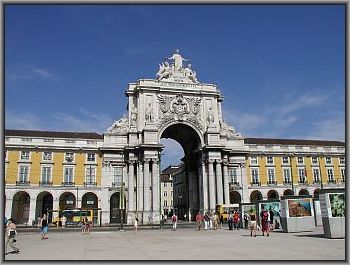
Porto : Porto is Portugal’s second-largest city and its capital of port wine. The 15th-century residence of the royal family, and a bastion of trade and mercantilism, the city is rich in the legacy of the past-art treasures, medieval cathedrals, famous museums, a fine library, and other attractions. Many old homes trace their beginnings to fortunes made in Portugal’s overseas colonies.
The city, which is undergoing a major renovation and sprucing up, has never looked better. Some of its alleyways - especially those around the old port - look as if they haven’t changed since the Middle Ages. Porto’s labyrinth of streets, with their decorative azulejos (tiles) and wrought-iron balconies, often filled with potted flowers, is reason enough to visit the city.
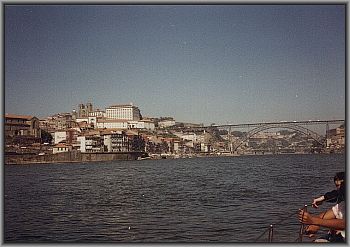
The Douro, which comes from Rio do Ouro, has always been Porto’s lifeblood. The city perches on a rocky gorge that the Douro cut out of a great stone mass.
Many visitors write off Porto as an industrial city with some spectacular bridges, but there’s much to enjoy here. As the provincial capital and university seat, Porto has its own artistic treasures.
Overall, however, Porto and the coast to its north and south are among the most rewarding places to visit in Portugal.
Amadora : Amadora is a city and a municipality in Portugal, in the northwest of the Lisbon Metropolitan Area. The city is the most densely populated municipality of Portugal. It forms a conurbation with the Portuguese capital Lisbon, and both cities share the same subway, bus and train network. It is essential a residential city, and the landscape is dominated by large apartment blocks, commercial parks and industrial areas.
Despite being essentially a residential city, Amadora has commercial zones, industries and headquarters of international companies operating in Portugal.
The arches in Amadora represent the famous Free Waters Aqueduct, which brings water from Sintra hills to Lisbon, stretching some 30 km through these three municipalities. It was finished in the 1770s and includes the largest masonry only arch ever built, located in Campolide - local coat of arms also displays the aqueduct.
Braga : Nearly everywhere you look in Braga there’s a church, a palace, a garden, or a fountain. Known to the Romans as Bracara Augusta, the town has resounded to the footsteps of other conquerors, including the Suevi, the Visigoths, and the Moors.
For centuries it has been an archiepiscopal seat and pilgrimage site. The Visigoths are said to have renounced their heresies here. Although aware of its rich history, the capital of Minho is very much a city of today. Its historic core and cathedral lie at the center, but the periphery bustles with commerce and industry, including a lot of manufacturing: brick making, soap making, textiles, smelting, engineering, and leather goods.
Politically, Braga is Portugal’s most conservative city. In 1926, a coup here paved the way for Salazar to begin his long dictatorship.
Braga is a hot place at night, primarily because of its young people. In fact, its lively streets have earned it a reputation for being “Lisbon in miniature.” Braga is also a religious capital. It stages the country’s most impressive observances of Semana Santa (The Holy Week).
Setúbal : On the right bank of the Sado River lies one of Portugal’s largest and oldest cities, said to have been founded by Noah’s grandson. Setúbal, the center of Portugal’s sardine industry, is known for the local production of the most exquisite muscatel wine in the world. Orange groves, orchards, vineyards, and outstanding beaches such as the popular Praia da Figuerinha all lie near Setúbal. The white pyramidal mounds dotting the landscape are deposits of sea salt drying in the sun, another major commercial asset of this seaside community.
The playground of Setúbal is the Peninsula of Tróia, site of some excellent white-sand beaches. Parts of the lonely, rocky stretches of land between Lisbon and Setúbal have undergone massive upgrades, making way for some of Europe’s best golf courses to emerge. Tróia is a long, sandy peninsula a cross the Sado River estuary. It’s accessible by ferry from Setúbal. The pine-studded strip of land is the site of one of Portugal’s la gest tourist enterprises: the Tróia Tourist Complex. Additionally, the beaches are some of the best south of Lisbon, and the waters are unpolluted.
Cetóbriga, on the peninsula, contains ruins of a thriving Roman port. Excavations began in the mid–19th century. The city, dating from the 3rd and 4th centuries, was destroyed by the ocean, but traces of villas, bathing pools, a fresco-decorated temple, and a place for salt preservation of fish have been unearthed. Cetóbriga’s ruins are about 2.5 km from the site of the present tourist development of Tróia.
Coimbra : Coimbra, known as Portugal’s most romantic city, lies on the weather-washed right bank of the muddy river Mondego and is also the educational center of the country. Coimbra’s charms and mysteries unfold as you walk up Rua Ferreira Borges, under the Gothic Arco de Almedina with its coat of arms.
One of Europe’s great Roman archaeological finds, Conimbriga is 16 km southwest of Coimbra. The site of a Celtic settlement established in the Iron Age, the village was occupied by the Romans in the late 1st century A.D. From then until the 5th century, the town knew a peaceful life. The site lay near a Roman camp but never powered as a military outpost, though it was on a Roman road connecting Lisbon and Braga.
This city of medieval churches is also filled with youthful energy. Noisy cafeterias, raucous bars, and such events as crew races lend a certain joie de vivre to the cityscape. Coimbra is at its best when the university is in session.
Agualva-Cacém : Agualva-Cacém is mostly a residential suburb of Lisbon.
It comprises the parishes of Agualva, Cacém, Mira-Sintra and São Marcos. Although the official designation is "Agualva-Cacém", it is commonly referred to as "Cacém". So there has no much information on this suburb.
Queluz : Queluz, only 20 minutes (15 km NW) from Lisbon, makes a great excursion from the capital or en route to Sintra. The Queluz Palace in its pink rococo glory, offers storybook Portuguese charm.
Funchal : The capital of Madeira, Funchal, is the focal point of the island and the gateway to its outlying villages. Today this southern coastal city of hillside villas and narrow winding streets is the island’s most luxuriant area, filled with fertile fields, hundreds of flowering gardens, and numerous exotic estates.
Vila Nova de Gaia : Vila Nova de Gaia is a suburb of Porto across the Douro from Porto’s commercial centre. This mostly residential district has far fewer monuments and attractions than Porto.
Every year, port wine is brought from vineyards along either side of the Douro River to lodges at Vila Nova de Gaia where it’s aged, blended, and processed. In the past it was transported on flat-bottomed boats. The actual portwine lodges (Taylor’s, Porto Sandeman, Ferreira, Caves Porto Cálem, and Caves Ramos Pinto) lie across the river from Porto at Vila Nova de Gaia. Like the sherry makers at Jerez de la Frontera, Spain, these places are hospitable and run tours for visitors.
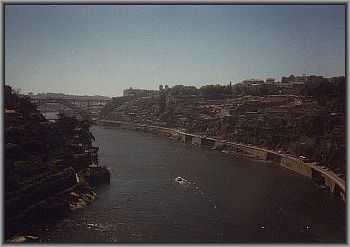
Vila Nova de Gaia, on the opposite side of the Douro River, is a less interesting after dark than Porto. But if you happen to be here, or if you’re interested in an evening stroll across one of Porto’s bridges for a panoramic view of Porto’s old harbor.
Aveiro : Aveiro is not a major city in Portual but worth to write some words about it (56 km North of Coimbra, 68 km South of Porto).
Myriad canals spanned by low-arched bridges crisscross Aveiro. At the mouth of the Vouga River, it’s cut off from the sea by a long sandbar that protects clusters of islets. The architecture is almost Flemish, a good foil for a setting of low willow-reed flat-lands, salt marshes, spray-misted dunes, and rice paddies.
On the lagoon, brightly painted swan-necked boats traverse the waters. Called barcos moliceiros, the flat-bottomed vessels carry fishers who harvest seaweed used for fer-tilizer. They’re ever on the lookout for eels, a regional specialty, which they catch in the shoals studded with lotus and water lilies. Outside the town are extensive salt pits, lined with fog-white pyramids of drying salt.
In the Rota da Luz area near Aveiro, you can go windsurfing in many places, including Ria de Aveiro and Pateira de Fermentelos. The long stretches of sand and the formation of waves also provide ideal conditions for surfing; particularly good Rota da Luz beachesare Esmoriz, Cortegaça, Furadouro, Torreira, São Jacinto, Barra, Costa Nova and Vagueira. The whole stretch of the Ria estuary is ideal for waterskiing, and many rivers, notably the Pateira and the Ria, are suited for canoeing and rowing.

The core of the city’s nightlife is the Canal de São Roque, near the Mercado de Peixe in the town center. Here you’ll find a trio of 18th-century stone salt warehouses. They’ve been transformed into attractive, richly folkloric bars that draw loyal local patrons.
Weather forecast for Lisbon
Weather forecast for Porto
Weather forecast for Aveiro
Weather forecast for Braga
Weather forecast for Coimbra
Weather forecast for Setúbal
The main beaches
Costa do Sol : Sometimes called the Estoril coast, this stretch of seafront extends 32 km west of Lisbon. Its two major resorts are Estoril and Cascais. Once the playground of the wintering wealthy, the area now attracts throngs of tourists, mainly from the northern part of Europe.
The Algarve : This region at the southern tip of Portugal gained its place on world tourist maps because of its string of beautiful, clean, sandy beaches. Lovely coves, caves, and grottos - some accessible only by boat - add to the region’s allure. Albufeira and Praia da Rocha are set against a backdrop of towering rock formations; the best cove beach is at Lagos, a former Moorish town with a deepwater harbor and wide bay.

The Beiras : In central Portugal, north of Lisbon, some of the finest beaches in Europe open onto the Atlantic. Like gems in a necklace, good, sandy beaches stretch from Praia de Leirosa north to Praia de Espinho. The surf can be heavy and the undertow strong. Major resorts include Figueira da Foz and nearby Buarcos. The beaches between Praia de Mira and Costa Nova are more secluded.
Costa Verde : As the northern coastline approaches Galicia in Spain, the Atlantic waters grow colder, and even in summer they’re likely to be windswept. But on certain days they’re among the most dramatic in Europe. We like the wide, sandy beach at Ponte de Lima, but there are many others. Notable destinations are the resort of Espinho, south of Porto, and other beach meccas, including Póvoa do Varzim and Ofir, which have some of the best hotels, restaurants, and watersports equipment in the country.




